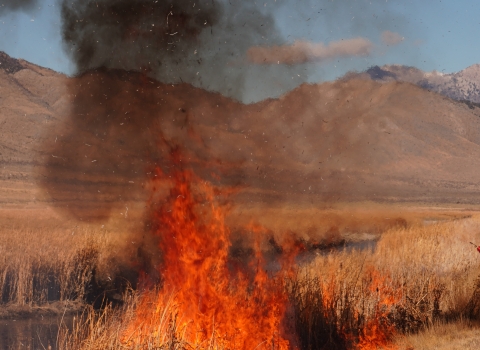The U.S. Fish and Wildlife Service has approved a revised recovery plan for the Mexican long-nosed bat, an endangered migratory bat from Mexico that is also found seasonally in West Texas and New Mexico. The revised recovery plan establishes downlisting and delisting criteria for the Mexican long-nosed bat, which was listed as endangered on Sept. 30, 1988.
“The Mexican long-nosed bat uses specific roosts for different life stages,” said Dr. Jade Florence, Fish and Wildlife Biologist with the Service’s Austin Ecological Services Field Office. “After mating, males remain south in Mexico, and the pregnant females migrate north to Texas and follow the ‘nectar corridor’ of flower blooms. To help with recovery, it is critical to protect these caves and conserve plants near roosting sites and along migratory routes.”
There is only one confirmed mating roost located in Mexico. In the U.S., there are two identified roosts, and both are on federally protected land, including Big Bend National Park in Texas, and Bureau of Land Management Wilderness Protected Area in New Mexico. The Mexican long-nosed bat mates and gives birth only once a year.
Feeding on nectar, the Mexican long-nosed bat pollinates more than 50 species of plants in the American southwest including a number of agave species. Agaves have been valued by people for more than 10,000 years for their food, drink and other natural products.
Successful recovery efforts will continue to involve cooperation and collaboration among federal and state agencies, Tribes, local agencies, private entities, and other stakeholders. Additional recovery practices include bat research and environmental education and outreach to support bat conservation and reduce disturbances from people entering bat caves.
Recovery plans are not regulatory. Rather they provide both a framework for guiding a species’ recovery and the criteria we expect will indicate that federal protection is no longer necessary. The recovery plan describes actions that are considered necessary to achieve recovery of the species, establishes downlisting and delisting criteria and estimates the time and cost to implement recovery actions for the species.
The recovery plan for the Mexican long-nosed bat is available online at ecos.fws.gov/ecp/species/8203.
Through conservation stewardship, current and future generations can continue to benefit from the natural world. The recovery of the Mexican long-nosed bat could not be realized without the commitment of Bat Conservation International, Program for the Conservation of Bats of Mexico, Sul Ross State University, Nivalis Conservation Network, the National Park Service, the Bureau of Land Management and others.



